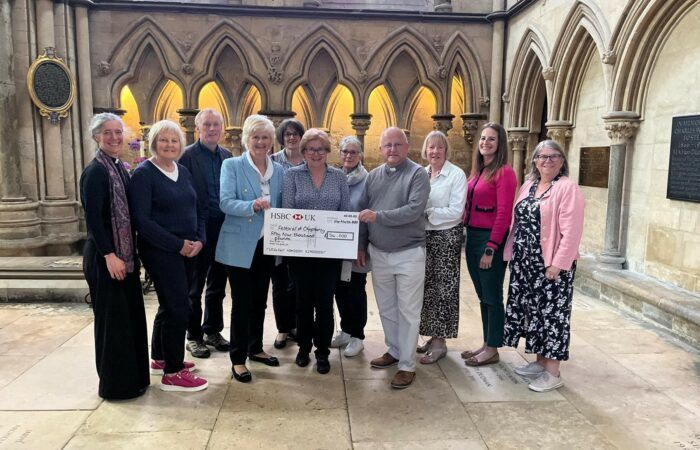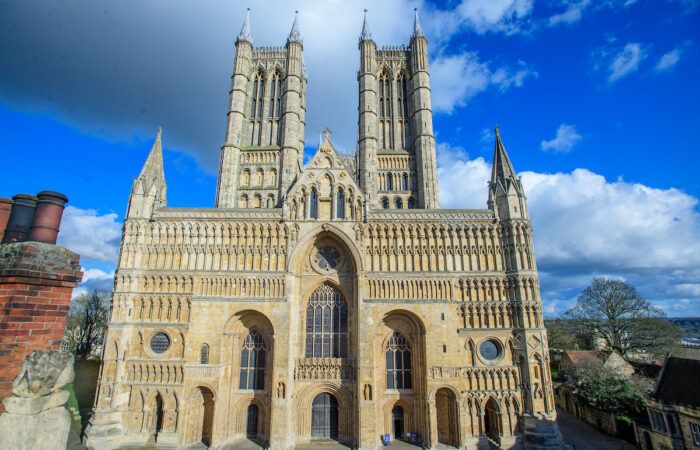A haunting photographic exhibition, which portrays the signs of modern slavery and exploitation, is coming to Lincoln from 12 to 19 October 2020 to mark Anti-Slavery day.
Entitled ‘Invisible People,’ the free exhibition will be on display in the new Dean’s Green outside Lincoln Cathedral.
Designed by the National Crime Agency, it features a series of striking images capturing snapshots of life in modern slavery – in agriculture, construction, maritime, cannabis farming and food processing, child trafficking for sexual exploitation and forced prostitution.
Each image comes with written commentary describing what the viewer is seeing, and information about signs which may indicate someone is a victim.
The exhibition has been brought to the city by Lincolnshire County Council, the Safer Lincolnshire Partnership, and The Clewer Initiative to coincide with Anti-Slavery Day on Sunday 18 October.
On the day itself, from 9.30am Lincoln Cathedral’s morning service will feature preaching on the subject of modern slavery, and in the evening the outside of the Cathedral will be illuminated in yellow lights to further help raise awareness of modern slavery and human trafficking.
The Very Revd Christine Wilson, Dean of Lincoln said that it is vital to highlight the presence of modern slavery in everyday life and that communities needed to work together to support the victims and to create a world without slavery.
“We may wish to believe that slavery is a thing of the past, but the unfortunate reality is that not only does slavery still exist, but that it is hidden in plain sight in many areas of modern life, from agriculture and food production to construction and labour exploitation. There is no typical victim of modern slavery; men, women and children of all ages, ethnicities and nationalities find themselves exploited, and their dignity removed.
“While it is easy to feel powerless in the face of this painful reality, as people of faith each of us has a responsibility to help end this injustice. If we each take the lead in our own communities, by learning to recognise the signs of exploitation and talking to friends, family and colleagues, we can seek to end the degrading and dehumanising practices of modern slavery.”
Cllr Barry Young, Chairman of the Safer Lincolnshire Partnership and Lincolnshire county councillor, said, “More than 200 years after slavery was abolished in the UK, there are still an estimated 136,000 men, women and children trapped in modern slavery across the country.
“Tackling this abhorrent crime starts with recognising the signs of this exploitation and understanding how we can all help if we spot something that doesn’t look right. Following on from the exhibition, we’ll be doing more to root out this evil in Lincolnshire, including working with local businesses and organisations. Lincolnshire is one of the safest counties in the country, and it should be that way for everyone who lives and works here.
“Bringing this exhibition to Lincoln allows many more people to see it, and allows us to continue the conversation about what modern slavery looks like, and how we can all help put a stop to it.
“We’re very grateful to Lincoln Cathedral for hosting the exhibition in their newly reopened Dean’s Green, their beautifully restored and landscaped garden on the north side of the Cathedral.”
Bishop Alastair Redfern, former Bishop of Derby and Chairman of The Clewer Initiative, commented, “This striking exhibition is an excellent way to remind people that slavery is not a thing in the past – sadly there are many victims within our communities, often hidden in plain sight. We hope the activities surrounding Anti-Slavery Day on Sunday 18 October result in more people understanding what modern slavery looks like and committing to look out for the tell-tale signs.”
Rob Richardson, Head of the Modern Slavery and Human Trafficking Unit at the National Crime Agency, said, “This exhibition aims to show that, while criminals may try to keep this type of exploitation hidden, victims are often living or working in plain sight. Look out for people who are often withdrawn, scared or unwilling to interact. They may be showing signs of mistreatment and ill health or living in over-crowded, cramped and dirty accommodation. Low price goods and services are often achieved through the exploitation so trust your instincts, and when you think something doesn’t look right speak out.”
The Dean’s Green, which is accessed from Minster Yard, is open Monday to Saturday from 10am to 4pm and Sunday from 11am to 4pm. Visitors to the outdoor exhibition are encouraged to maintain social distancing whilst looking at the images.
If you think that someone might be the victim of modern slavery, you can call the Modern Slavery Helpline on 08000 121 700, or the police on 101. In an emergency call 999.
You can download the ‘Unseen’ app for further information on the signs of modern slavery, and to report your concerns. Go to www.lincolnshire.gov.uk/modernslavery.
In the run up to Anti-Slavery Day on 18 October, you’ll find more information about the different types of modern slavery and how you can help on the council’s social media – search for Lincolnshire County Council on Facebook and Twitter.

